Direct Couriers operates as a comprehensive transportation and logistics firm, offering an extensive range of courier solutions that provide local, interstate, and global deliveries. Their main focus centres on same-day point-to-point metropolitan deliveries, underscoring their commitment towards prompt, dependable, and customer-friendly delivery services.
For every enterprise, it’s crucial to monitor both the deliveries in progress and the charges incurred via courier services. The manual tracking of all deliveries and associated fees can become burdensome. Adapting to automated software for verification can prove to be advantageous.
Cointab Reconciliation software simplifies the reconciliation process by automatically comparing different types of reports, including ERP reports, shipping invoices, Pincode master data, SKU reports, and rate cards with Direct Courier invoices.
Reports Required for Direct Couriers Delivery Invoice Verification:
Pincode Zone Report:
Pincode zone reports consist of the zone according to the source location and destination location.
SKU Report:
This report consists of a unique code assigned to each product which helps in determining the weight and dimensions of that product.
Rate Card:
The rate card includes different shipping charges, that are charged based on the weight and zone of the order.
Direct Couriers Delivery Invoice:
Important columns like order ID, billing zone, product type, weight, RTO, billing pincode, applied weight slab and the amount charges are present in the Direct Couriers delivery invoice, to make further calculations.
Invoice Verification:
The following process shows how Cointab Reconciliation software calculates the expected weight, expected location and expected rate using the SKU report, Pincode master and the rate card.
SKU Report:
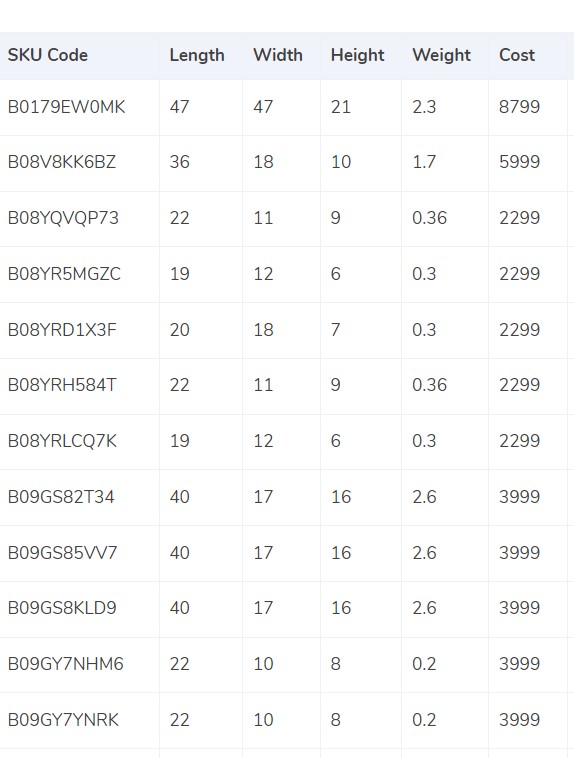
-
- Cointab Reconciliation software refers to the SKU code present in the ERP report, to get the weight and dimension of the product.
- The value present in the weight column of the invoice is taken into consideration, in case the weight is not present in the ERP report.
- If the dimension of the product is given, then the volumetric weight can be calculated using the formula i.e. “Length x Width x Height”. The dimensions of the volumetric weight have to be present in centimetres, to make the calculation work. The calculated value is later divided by the divisor provided in the divisor card and if the value is not present in the divisor card then by default it’s divided by 5000.
Later the values are moved to the Direct Couriers invoice and ERP report after the calculation is made.
- At last, the final weight is rounded off to get the final slab.
Pincode Master:
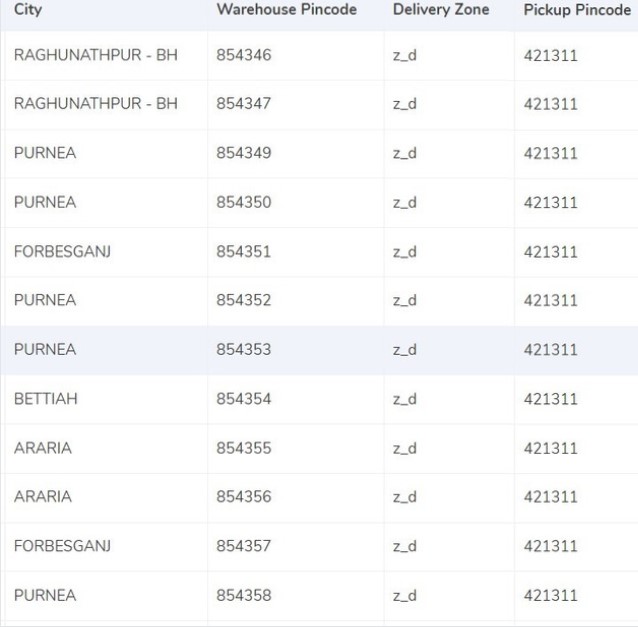
- The report includes the origin location and delivery location and a zone is then assigned to that combination.
- The origin and delivery location are linked to the invoice to get the desired zone for each invoice.
- Each location is classified either into regional, international, global, etc. and is further classified in their respective indicator i.e. a,b,c, etc.
Rate Card:
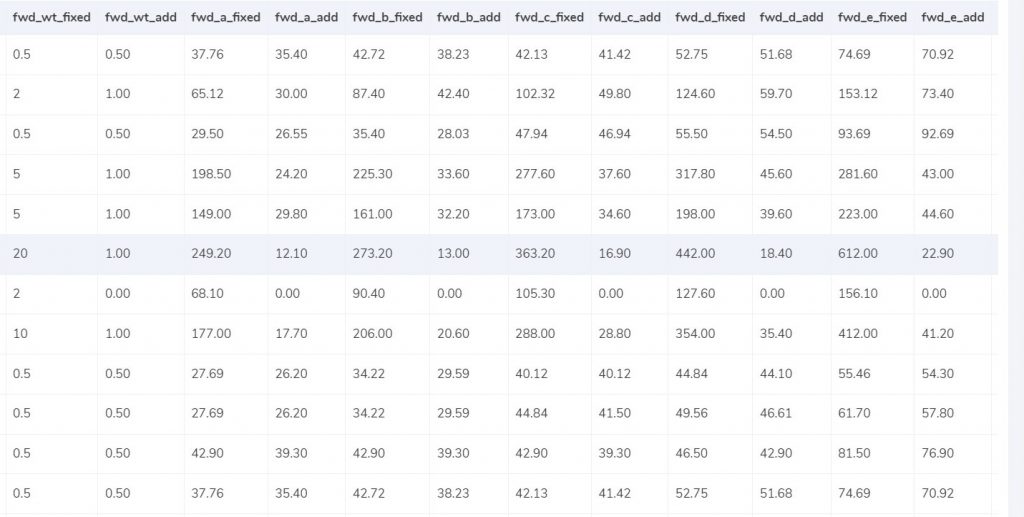
- The rates in the rate card are mentioned according to the zone and weight of the product. The charges might differ if the weight of the product increases, the rates given above are given according to the acceptable limit.
- Columns like “courier”, “zone”, and “fwd_wt_fixed” ( refers to the additional weight on which the fixed rate increases) and the divisor are checked with the respective columns present in the Direct Couriers invoice, to verify the right items are put in the invoice.
- The dates of delivery are prescribed under certain rates, as the rates are applicable for a certain period.
Charges:
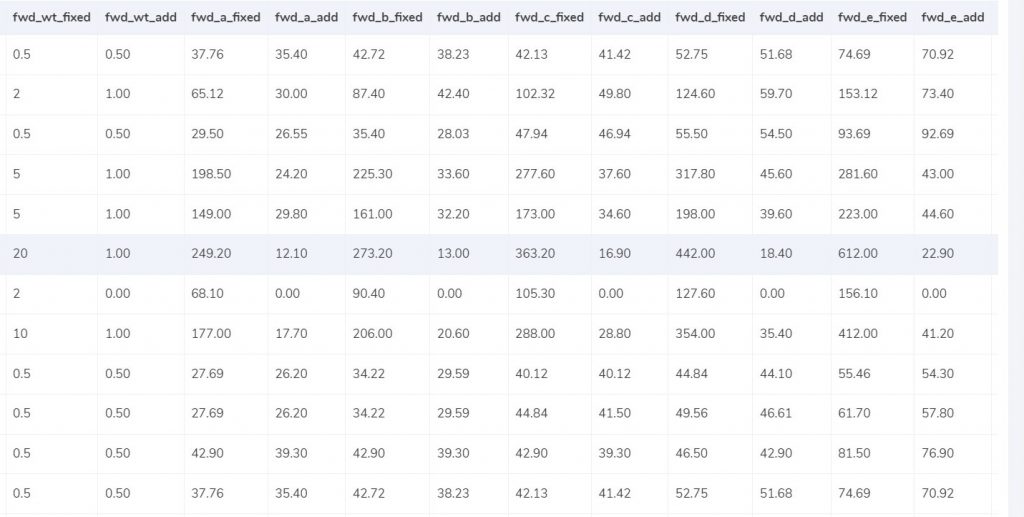
Expected Forward Charge:
After the final slab is calculated if it is seen to be lower or equal to the weight limit (“fwd_wt_fixed”) given in the rate card, that means it is equal to “fwd_wt_fixed”. Then the fees charged on it are “fwd_fixed” according to the zone. If the product is not equal to “fwd_wt_fixed” then it means that the product has more weight. The fee charged for extra weight is “fwd_add” according to the zone.
The formula for the expected rate is:
Expected_fwd_chg = fwd_fixed + (extra_weight) x fwd_add
Expected RTO Charge:
After the final slab is calculated if it is seen to be lesser or equal to the weight limit (rto_wt_fixed”) given in the rate card, that means that it is equal to the “rto_fixed” and the fee charged on it is “rto_fixed” according to the zone. If it is not equal to the “rto_wt_fixed” column then that means that the product has extra weight. The fee charged for the excess weight is “rto_add” as per the zone.
The formula for the expected charge is as seen below:
Expected_rto_chg = rto_fixed + (extra_weight) x rto_add
Expected Final Amount:
The expected final amount is calculated using Forward charge, RTO charge and Tax Percentage.
Result:
The expected amount is calculated based on the weight and zone of the product. Cointab Reconciliation software compares the ERP report, Pincode report, and the rate card with the invoice provided by Direct Couriers.
ERP:

Found in ERP:
The number of products delivered for a particular order is present in the ERP report. In the above case, the orders present in the Direct Couriers invoice are also found in the ERP report, which helps to denote the weight of the product which can be later verified.
Not Found in ERP:
In the above case, the orders present in the Direct Couriers invoice are not present in the ERP report and hence the orders cannot be verified further.
Pincode Master:

Found in Pincode Master:
The data entries are present in the Direct Couriers invoice as well as in the Pincode master and hence the order can be verified further.
Not Found in Pincode Master:
The data entries are present in the Direct Couriers invoice but are not present in the Pincode Master and hence it cannot be verified further.
Rate card:

Found in Rate Card:
The rates for these orders are present in the Direct courier invoice as well as in the Rate card.
Not Found in Rate Card:
The rates for these orders are present in the Rate Card but are not present in the Direct Courier invoice.
Fee Verification using ERP- Direct Couriers:
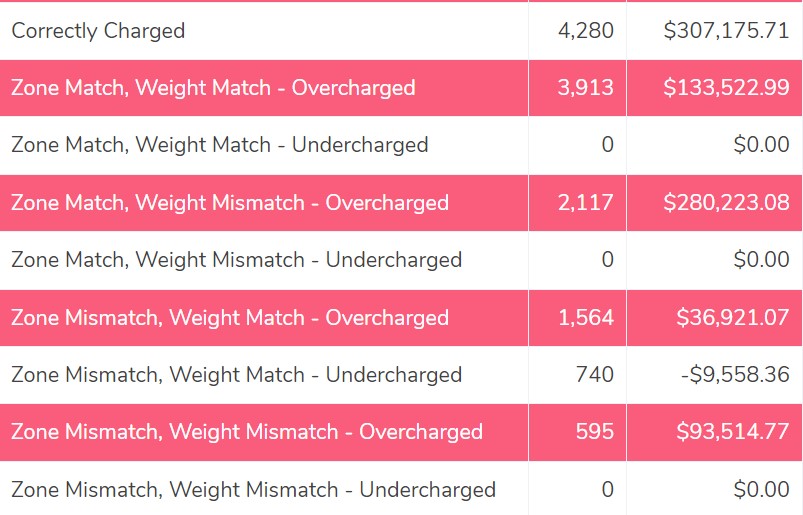
Correctly Charged
Fees are calculated with the help of the rate card matches the fee present in the Direct Couriers invoice. The software compares the ERP report and the Direct Couriers invoice report and shows the order deliveries where the zone and the product weight are correct.
Zone Match, Weight Match- Overcharged
Here the ERP report and the Direct Couriers report are compared, which shows that the zone and weight of the product match but the fee charged is wrong. In this situation, the invoice charges are seen to be more compared to the calculated amount, hence it is seen to be overcharged.
Zone Match, Weight Match- Undercharged
Cointab Reconciliation software compares the ERP report and the Direct Couriers report, which shows that the zone and weight of the product match but the fee charged is wrong. In comparison to the calculated amount the invoice charges are seen to be less, hence it is said to be undercharged.
Zone Mismatch, Weight Match- Overercharged
When the software compares the ERP report and Direct Couriers report it’s seen that the zone of the product and fees are not match except for the weight. Since the zone of the product and fees do not match, the amount is seen to be overcharged compared to the calculated amount.
Zone Mismatch, Weight Match- Undercharged
Here the software compares the ERP report and the Direct Couriers report and it’s seen that the zone and fees of the product do not match, but the weight matches. Since the fees and zone does not match it is seen to be undercharged compared to the calculated amount.
Zone Match, Weight Mismatch- Overcharged
Here, the software compares the ERP report and the Direct Couriers report and it is observed that the weight and the fees of the product do not match in both reports, only the zone matches. Hence the amount is overcharged in this case.
Zone Match, Weight Mismatch- Undercharged
Cointab Reconciliation compares the ERP report and the Direct Couriers report and it’s seen that the zone and fees of the product match, but the weight of the product does not match. Since the weight is seen to be mismatched the amount is undercharged compared to the calculated amount.
Zone Mismatch, Weight Mismatch- Overcharged
The software compares the ERP report and the Direct Couriers report showing that the zone, fee and weight do not match. The amount is seen to be more than the calculated amount.
Zone Mismatch, Weight Mismatch- Undercharged
Here the software compares the ERP report and the Direct Couriers report, it shows that the zone, fee and weight of the product do not match. Hence the amount is seen to be less than the calculated amount.
Cointab Reconciliation software simplifies the reconciliation process. It helps you to effortlessly upload data, create a customized workflow, and obtain results. Verification of transactions has never been this convenient before, but with the help of top-notch software like Cointab Reconciliation Software, the reconciliation of financial data can be carried out easily. Get started with Cointab’s automated reconciliation software today and bid goodbye to tedious manual reconciliation.